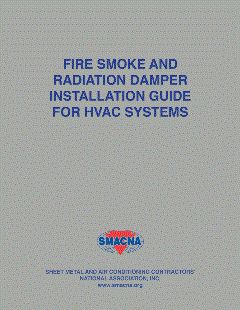Indiana University of Pennsylvania is spending $15 million to add student housing and a recreational center to college’s main campus.
The 40,900-square-foot facility, now under construction in Indiana, Pa., will include three basketball courts and an indoor running track with 77 student apartments of various sizes on top of that building. The recreation facility will be run by the university’s Student Cooperative Association.
Pittsburgh-based Tower Engineering was chosen as the mechanical engineering firm to design the structure’s HVAC system. Thomas R. Valerio, P.E., was Tower’s project manager on the job. He was charged with selecting the insulation material for the HVAC ducts.
Valerio said he left his options open when specifying liner material for the ductwork because cost was an important factor in the selection process — as was insulation value.
“I specified either flexible elastomeric or a polyester duct liner for the project,” Valerio said. “The mechanical contractor, Renick Bros., chose Ductmate Industries’ PolyArmor polyester system because its insulation ratings were better than the elastomeric lining and the cost was less than that of the rubber-type liner as well.”
Thin and effective
Valerio pointed out that liner material like fiberglass and elastomeric require up to 1 ½ inches of material thickness to reach the energy code-compliant R-5 rating while the PolyArmor requires only an inch.
“If we use the elastomeric liner, we need to make the overall ducting 3 inches larger than the air tunnel,” Valerio said. “While that might not sound like much in a large building, it can be a challenge to fit in crowded utility spaces where every inch counts.
Valerio said he prefers using duct liners over wraps because wraps offer no acoustical properties. Additionally, a liner can be installed more cost effectively at the shop using a coil line, eliminating the need to bring in an insulation subcontractor once the ducting is installed.
The school’s sheet metal ductwork is being made and installed by Renick, located in Slippery Rock, Pa. The full-service mechanical company has been in business since 1948.
Shop foreman John Plunkard said the company primarily uses fiberglass duct lining. This was his first experience using PolyArmor insulation.
Plunkard said the large recreational building required approximately 22,000 square feet of liner. It was used over duct ranging from 8 inches by 8 inches to up to 80 inches wide. Because of the extensive duct sizes and the high quantity of material to be installed, Renick looked into polyester-based liner materials.
Research
Their research lead them to Ductmate’s PolyArmor, a polyester duct liner used in forced air heating, ventilating and air-conditioning systems. According to the manufacturer, it is made to provide industry-leading R-values with excellent noise reduction values and superior indoor air quality.
The polyester material is webbed into a thermal blanket which is then bonded with a foil-scrim-kraft facing to resist damage during system installation and operation. It also provides excellent airstream durability, Ductmate said.
“This duct liner is 10 times easier to use than any of the other stuff we’ve used, especially the elastomeric type,” Plunkard said. “It’s easy to cut and attach to the sheet metal surface.”
Plunkard added that the material is very lightweight and durable with its aluminum facing, and very easy to cut and form the liner, including gluing and spotting. Plunkard used a water-jet machine to cut the material, but it can be shaped using a variety of methods from cutting tools to a razor blade. Some sheet metal coil line manufacturers are also adapting to it; Vicon is developing a special blade for its use.
Dan Perestock, Ductmate’s PolyArmor product manager, said the polyester-based insulation has more to offer than just easy installation and great insulation qualities.
“The PolyArmor liner is installed to the duct surface using water-based adhesives,” he said. “This eliminates the need for solvent-based adhesives that are unhealthy for the installer while emitting VOC (volatile organic compounds) for many years after installation.”
Perestock added the polyester material does not promote or support the growth of mold or mildew, making it very desirable for healthy environments and occupant safety.
Like Renick Bros. officials, Valerio remarked the university project was the first time he and Tower Engineering used the PolyArmor liner. Since then he has specified it in a number of projects.
“PolyArmor really fits the bill, and we will continue to use it as a better replacement for elastomeric or fiberglass,” Valerio said.
This article and its images were supplied by Ductmate Industries.












